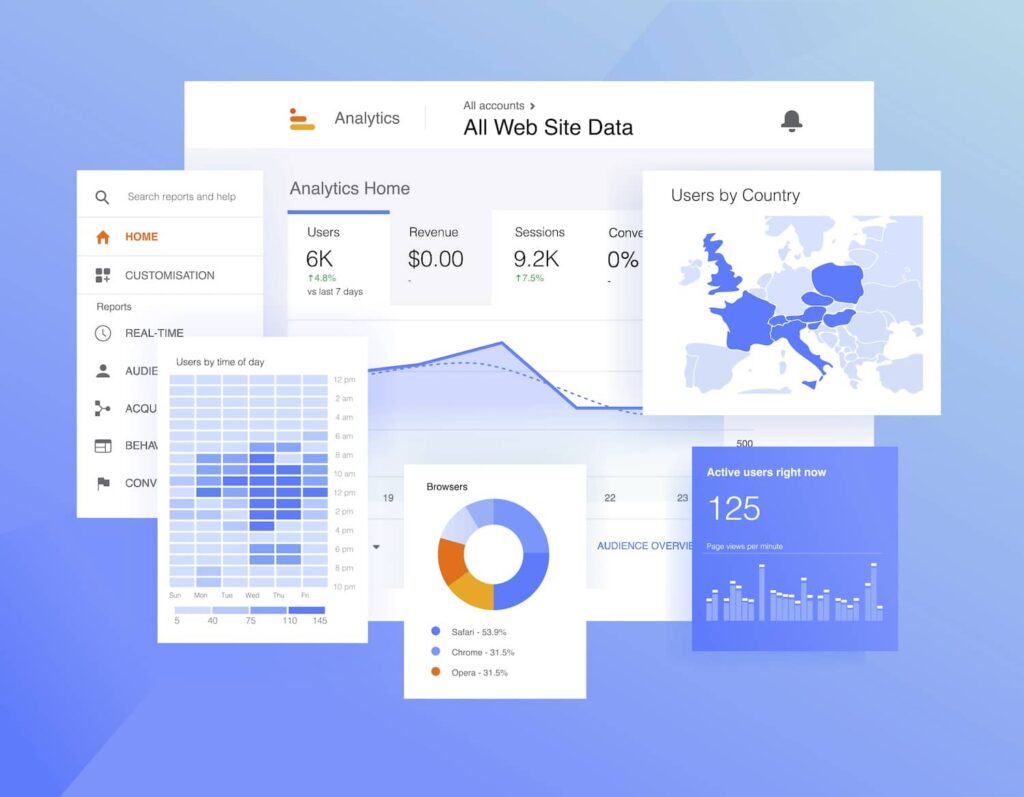Maximizing Your Information Interpretation With Additional Measurement in Google Analytics for Informed Decision-Making
Google Analytics, a powerful tool in the hands of digital marketing experts and analysts, offers a feature recognized as Secondary Dimension. By tapping into the capabilities of Secondary Dimension, users can acquire an extra thorough sight of their information, allowing them to make strategic choices based on an extra nuanced and comprehensive analysis.
Recognizing Secondary Dimension Functionality
Recognizing the second measurement performance in Google Analytics improves the deepness of information analysis by providing additional context to primary metrics. By integrating a second measurement, experts can segment and compare data, obtaining understandings that would otherwise continue to be covert. This function enables customers to view data via various lenses, such as the source of traffic, customer habits, or geographic area, using a more comprehensive understanding of internet site performance.
When looking entirely at key metrics,Utilizing additional measurements can reveal patterns and relationships that may not be obvious. Pairing the main metric of web page sights with a secondary dimension like tool category can uncover whether specific tools drive more web traffic to details pages. This info can after that notify internet site optimization techniques customized to different gadget customers.
Carrying Out Additional Measurement in Reports
Structure upon the insights gained with second dimension analysis, integrating these dimensions properly right into records in Google Analytics is essential for removing workable data-driven choices. what is a secondary dimension in google analytics. By applying secondary measurements in reports, customers can delve deeper into the efficiency metrics of their internet site or app. This attribute permits a much more extensive analysis by providing added context to the main measurement chosen
To carry out a second measurement in reports, just browse to the desired record in Google Analytics and click on the "Secondary dimension" tab located above the information table. From there, users can choose from a large range of secondary measurements such as 'Source/Medium', 'Device Category', or 'Landing Page'. Choosing the most appropriate additional dimension will certainly depend upon the particular insights you are looking for to discover.
Utilizing second measurements in reports not only boosts the deepness of analysis but additionally help in identifying trends, patterns, and relationships that might have otherwise gone unnoticed. This strategic strategy to information interpretation makes it possible for organizations to make educated decisions that drive development and success.

Analyzing Information With Secondary Measurements
Upon integrating secondary dimensions right into information evaluation within Google Analytics, an in-depth exam of vital performance indicators can be achieved, offering important insights for tactical decision-making. By using additional measurements, analysts can even more study their key information measurements, such as website traffic resources or customer demographics, to uncover patterns or fads that might not be quickly noticeable. This much deeper degree of evaluation permits a more comprehensive understanding of individual habits and communications on a web site or electronic system.
Analyzing data with secondary dimensions enables marketing experts and internet site proprietors to address even more certain concerns about their audience, content performance, and advertising efforts. By combining the primary measurement of website traffic resources with an additional dimension like geographical area, companies can identify which areas drive the most important traffic to their website. This type of granular insight can educate advertising and marketing approaches, web content creation, and site optimization initiatives to better provide to the demands and preferences of their target market.
Leveraging Second Dimensions for Insights
By incorporating additional dimensions successfully, analysts can draw out much deeper understandings from information sets in Google Analytics, improving the understanding of user behavior and efficiency metrics. Leveraging second dimensions includes incorporating different qualities or metrics with primary data to discover patterns and fads that might not appear in the beginning glance. As an example, by including a second dimension such as blog 'Gadget Group' to a report on site web traffic, analysts can determine whether customer behavior varies across different tools like desktops, mobile phones, or tablets.
In addition, utilizing additional measurements permits experts to segment data a lot more granularly, allowing them to identify specific audience sections or geographical areas that show distinctive behaviors. what is a secondary dimension in google analytics. This segmentation can be crucial in customizing marketing techniques, enhancing site material, or improving user experience based on the unique qualities of each section
Fundamentally, leveraging secondary dimensions in Google Analytics empowers analysts to dig deeper into data, obtain significant insights, and make informed decisions that drive organization development and success.
Enhancing Decision-Making Via Additional Dimensions
Utilizing second measurements in data evaluation gives a critical benefit by revealing actionable insights that drive educated decision-making in Google Analytics. By boosting decision-making with secondary dimensions, users can delve much deeper right into their data to extract important details that look at this site might not be right away obvious. These additional dimensions supply a more extensive sight of individual actions, interactions, and results, making it possible for experts to make even more educated decisions based on concrete data.
Through the application of additional dimensions, experts can section and filter information to identify patterns, fads, and connections that might influence decision-making procedures. This boosted level of granularity permits a more targeted technique to analyzing data, leading to more insightful and exact conclusions.
Additionally, secondary measurements offer the opportunity to contrast various information factors side-by-side, facilitating a much more extensive examination of efficiency metrics and KPIs. By leveraging secondary dimensions efficiently, organizations can optimize their techniques, enhance customer experiences, and ultimately achieve their objectives with self-confidence.
Final Thought

Building upon the insights obtained through additional measurement evaluation, incorporating these measurements efficiently right into reports in Google Analytics is vital for removing actionable data-driven decisions.To carry out a second dimension in reports, just browse to the desired report in Google Analytics and click on the "Additional measurement" tab situated over the data table. By using additional measurements, experts can even more explore their main information measurements, such as traffic sources or user demographics, to discover patterns or patterns that might not be immediately obvious. By integrating the main measurement of website traffic resources with a secondary dimension like geographical place, services can recognize which areas drive the most beneficial website traffic to their website.By incorporating secondary dimensions efficiently, analysts can draw out much deeper insights from data sets in Google Analytics, improving the understanding of customer behavior and performance metrics.
Comments on “Comprehending Secondary Dimensions in Google Analytics: Meaning and Strategic Integration”